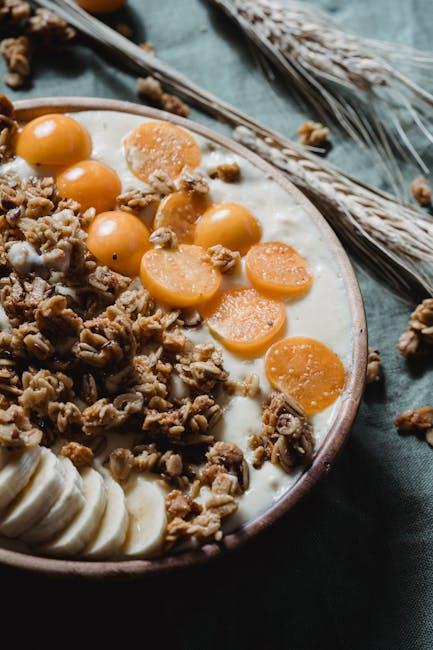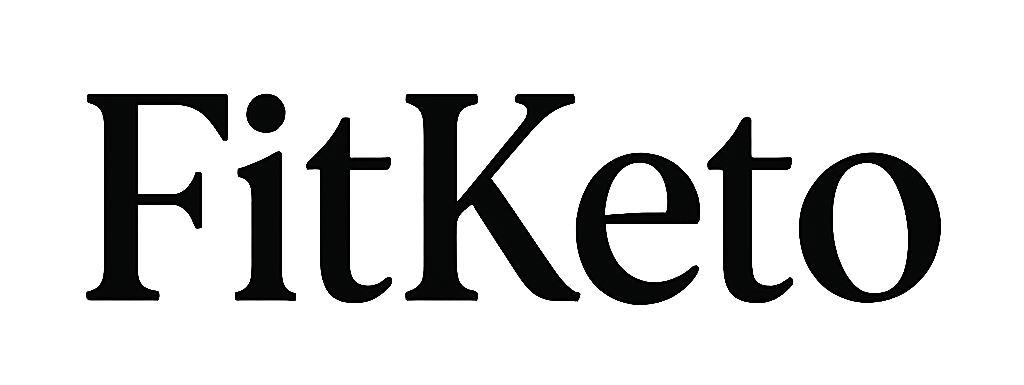In the bustling world of health and wellness, few terms have sparked as much curiosity—and confusion—as probiotics and prebiotics. Often tossed around like interchangeable buzzwords, these microscopic marvels play distinctly different roles in nurturing our gut health. But what exactly sets them apart? Are they allies in the same battle for digestive balance, or do they each champion their own unique causes? In this article, we peel back the layers to demystify probiotics and prebiotics, exploring their differences, benefits, and how they work together to keep our inner ecosystem thriving.
Table of Contents
- Understanding the Core Functions of Probiotics and Prebiotics
- Exploring How Probiotics and Prebiotics Impact Gut Health
- Key Dietary Sources and How to Incorporate Them Daily
- Tailoring Your Intake for Individual Health Goals
- Common Myths and Evidence-Based Recommendations
- Q&A
- Wrapping Up

Understanding the Core Functions of Probiotics and Prebiotics
At the heart of digestive health, probiotics serve as the beneficial live bacteria that inhabit your gut. These microscopic allies work tirelessly to maintain balance within your digestive system, fighting off harmful pathogens, enhancing immune responses, and even aiding in nutrient absorption. Think of probiotics as the warriors defending your internal ecosystem, ensuring the smooth functioning of your metabolism and gut lining integrity. Their influence extends beyond digestion, often impacting mood and overall wellness through the gut-brain axis.
On the flip side, prebiotics act as the nourishing food source for these good bacteria. Prebiotics are typically fibers and natural substances found in foods like garlic, onions, and bananas, which your body can’t digest but your probiotics thrive on. By selectively stimulating the growth and activity of these beneficial microbes, prebiotics help amplify the positive effects of probiotics, fostering a healthier and more resilient microbiome. Together, they create a dynamic duo that supports your gut’s ecosystem, promoting better digestion, immunity, and overall health.
| Function | Probiotics | Prebiotics |
|---|---|---|
| Role | Live beneficial bacteria | Food for beneficial bacteria |
| Source | Fermented foods, supplements | Dietary fibers, plant-based foods |
| Primary Benefit | Balance gut microbiota | Enhance microbial growth |
Exploring How Probiotics and Prebiotics Impact Gut Health
Probiotics are live microorganisms, often referred to as “good bacteria,” that help maintain a balanced gut flora. When consumed through supplements or fermented foods like yogurt, sauerkraut, and kimchi, they actively colonize the intestines, enhancing digestion, strengthening the immune system, and even influencing mood. These beneficial microbes compete with harmful bacteria, reducing inflammation and promoting overall gut health, which is the cornerstone of many body functions.
On the other hand, prebiotics serve as nourishment for these good bacteria. Found in fiber-rich foods such as garlic, onions, bananas, and whole grains, prebiotics are non-digestible compounds that pass through the upper digestive tract and reach the colon intact. There, they selectively stimulate the growth and activity of probiotic bacteria. The symbiotic relationship between prebiotics and probiotics creates a thriving ecosystem, optimizing digestion and helping to prevent gastrointestinal disorders.
- Probiotics: live bacteria that add to the gut microbiome
- Prebiotics: dietary fibers that feed beneficial bacteria
- Working together for improved digestion and immunity
| Characteristic | Probiotics | Prebiotics |
|---|---|---|
| Nature | Live microorganisms | Non-digestible fibers |
| Primary Role | Restore gut bacteria balance | Nourish good bacteria |
| Common Sources | Yogurt, kefir, kimchi | Garlic, onions, bananas |
Key Dietary Sources and How to Incorporate Them Daily
When it comes to boosting your gut health, including the right foods daily makes all the difference. Probiotics are live beneficial bacteria found in fermented foods. For a natural probiotic infusion, consider adding yogurt, kefir, sauerkraut, kimchi, and miso to your meals. A quick trick is to start your day with a dollop of yogurt mixed with fresh fruit or enjoy a side of kimchi with your dinner. These foods not only introduce healthy microbes but also add exciting flavors and textures to your diet.
Prebiotics are fibers that nourish these friendly bacteria, found abundantly in certain vegetables, fruits, and whole grains. Daily incorporation can be as simple as tossing garlic and onions into your cooking, snacking on a banana, or adding a sprinkle of flaxseeds to your smoothie. Below is a quick reference table that highlights prominent sources and easy ways to include them in your routine:
| Food Type | Examples | How to Include |
|---|---|---|
| Probiotics | Yogurt, Kefir, Kimchi | Breakfast parfait, smoothie base, side dish |
| Prebiotics | Garlic, Onions, Bananas | Cooking ingredients, raw snacks, smoothie additions |
Tailoring Your Intake for Individual Health Goals
When shaping your probiotic and prebiotic intake to suit personal health aspirations, the key is understanding your body’s specific needs and how each contributes uniquely to your gut ecosystem. For those targeting digestive balance or relief from occasional bloating, probiotics rich in Lactobacillus and Bifidobacterium strains can be particularly beneficial. On the other hand, if enhancing nutrient absorption or supporting immune health is your goal, prebiotics — which act as nourishment for beneficial bacteria — play a crucial role in fostering a thriving microbiome. Consider your lifestyle, dietary restrictions, and medical conditions as factors to harmonize your intake for maximum benefit.
To simplify your choices, here’s a quick guide on how to align your supplementation or diet with distinct health objectives:
- Weight Management: Incorporate prebiotics like inulin to promote satiety and probiotic strains that influence metabolism.
- Mental Wellness: Focus on probiotic strains linked to the gut-brain axis, complemented by prebiotics to sustain their activity.
- Skin Health: Use a balanced combination to reduce inflammation and support natural barrier function.
- Athletic Performance: Enhance recovery with probiotics that reduce gastrointestinal distress and prebiotics to boost energy metabolism.
| Health Goal | Recommended Probiotics | Recommended Prebiotics |
|---|---|---|
| Digestive Health | Lactobacillus acidophilus, Bifidobacterium bifidum | Fructooligosaccharides (FOS), Galactooligosaccharides (GOS) |
| Immune Support | Lactobacillus rhamnosus, Bifidobacterium lactis | Inulin, Resistant Starch |
| Mental Clarity | Lactobacillus helveticus, Bifidobacterium longum | Partially Hydrolyzed Guar Gum, Pectin |
Common Myths and Evidence-Based Recommendations
There’s a lot of confusion surrounding probiotics and prebiotics, often leading to myths that can cloud understanding. One common myth is that probiotics alone can instantly “fix” your gut health. While they do play a vital role in maintaining a balanced microbiome, probiotics need the right environment and nourishment—namely prebiotics—to thrive. Another misconception is that prebiotics are just dietary fiber. Though they are a type of fiber, prebiotics specifically feed beneficial bacteria, promoting a healthier gut ecosystem rather than just aiding digestion in a generic way.
Evidence-based recommendations emphasize the importance of combining both probiotics and prebiotics for optimum gut support. Some simple guidelines include:
- Choose diverse probiotic strains: Different strains offer unique benefits, so a broad-spectrum product or fermented foods can be advantageous.
- Incorporate prebiotic-rich foods daily: Foods like garlic, onions, asparagus, and bananas help nourish good bacteria naturally.
- Maintain consistency: Gut health improvements require regular intake over time, not quick fixes.
- Avoid unnecessary antibiotics: While sometimes necessary, antibiotics can disrupt the microbiome balance.
| Myth | Evidence-Based Truth |
|---|---|
| Probiotics alone can restore gut health instantly | Require prebiotics and time to establish lasting benefits |
| Prebiotics are just any fiber | Only specific fibers that selectively feed beneficial bacteria qualify |
| All probiotics are the same | Different strains serve different purposes in gut health |
| Supplements are always better than foods | Whole food sources provide additional nutrients and variety |
Q&A
Q: What exactly are probiotics and prebiotics?
A: Think of probiotics as tiny, friendly bacteria that live in your gut and help keep your digestive system happy. Prebiotics, on the other hand, are the special fibers that act like food for these good bacteria, feeding and supporting their growth.
Q: Do probiotics and prebiotics do the same job?
A: Not quite. Probiotics introduce beneficial bacteria into your digestive system, while prebiotics nourish the bacteria that are already there, encouraging their activity and multiplying their numbers. They work best as a team.
Q: Where can I find probiotics and prebiotics in my diet?
A: Probiotics typically come from fermented foods like yogurt, kefir, sauerkraut, and kimchi. Prebiotics are found in fiber-rich foods such as garlic, onions, bananas, asparagus, and whole grains.
Q: Can I take probiotics and prebiotics as supplements?
A: Absolutely! Both are available in supplement form. Probiotic supplements deliver live beneficial bacteria, whereas prebiotic supplements provide the fibers that feed them. However, it’s a good idea to consult a healthcare professional before starting any new supplement.
Q: Why should I care about probiotics and prebiotics?
A: These two players are key to maintaining a balanced gut microbiome, which supports digestion, immune function, and even mood regulation. Together, they help create a healthy internal environment that keeps you feeling your best.
Q: Is it possible to have too much of either?
A: While both are generally safe, overindulging in probiotics or prebiotics might lead to digestive discomfort like gas or bloating. Moderation and gradual introduction are usually the best approach.
Q: How do probiotics and prebiotics complement each other?
A: Probiotics bring in the beneficial bacteria, but without prebiotics—the nourishment—they can struggle to thrive. Prebiotics serve as a fertilizer for your gut flora, ensuring that probiotics settle in and flourish effectively.
Q: Can prebiotics benefit people without taking probiotics?
A: Yes! Prebiotics can boost the growth of your body’s existing good bacteria. However, combining both tends to yield the best results for gut health.
Q: Are probiotics and prebiotics only about gut health?
A: While their main focus is digestive wellness, a balanced gut microbiome influenced by these two can impact other aspects of health, including immune resilience and mental well-being.
Q: What’s the bottom line on probiotics vs prebiotics?
A: Probiotics are the helpful bacteria guests invited into your digestive system, while prebiotics are the welcome treats that keep them happy and thriving. Embracing both in your diet can pave the way for a healthier gut and better overall wellness.
Wrapping Up
In the intricate dance of gut health, probiotics and prebiotics each play their distinct yet harmonious roles. While probiotics bring the beneficial bacteria to the party, prebiotics serve as their favorite feast, nurturing and sustaining a balanced microbiome. Understanding their differences helps us make informed choices—whether through diet or supplements—to support our digestive wellness. Ultimately, the key isn’t about choosing one over the other but appreciating how these two allies work together, quietly shaping our health from within. As science continues to uncover their many benefits, embracing both probiotics and prebiotics might just be the recipe for a happier, healthier gut.

